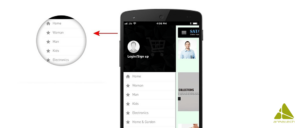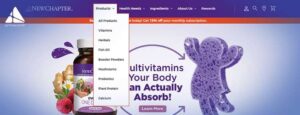Latest Blogs
Software Development
Ramsha Khan
Dec 11, 2025

How Custom Mobile App Benefits Your Business
In today’s technology-oriented world, the need for a custom mobile app has become more important than ever. They’re very helpful to your business to step into the next level of growth. Everyone who uses a smartphone or tablet gets to spend a significant amount of their everyday lives on all these devices. Mobile applications bring convenience to our important day-to-day activities and have become a necessity for consumers. Apps also allow businesses around the world to stay viable in an extremely diverse and complex setting. As a result, competition for business mobile application development has grown exponentially as companies are struggling to gain a competitive edge over each other.
A mobile application is fairly useless if it does not offer good mobility. As the name rightly suggests, mobility should be a must, and a great deal can be attained by custom mobile applications. Focused solely on your business, offering the data related to your business; this application provides an increase in mobility as well as usability. You will be unable to fully attract your customers unless your mobile application is remote or mobile. The custom mobile application development also addresses this problem and provides an excellent deal of mobility and the capacity to work remotely. Your business becomes more accessible and gets the remote access you need.
Mobile applications are designed with database integration which provides a reason to be afraid of data security. Although overloaded, the request is carried out adequately by any device with the passage of time. It provides service to keep track of the data at all times. Custom applications therefore also help to monitor the progress of projects and services. With thoughts and ideas specific to your customers, they can be easily apprehended on the phone for instruction. Such records can then be processed securely in safe locations and can only be viewed by licensed staff. This can help to improve transparency and better serve your customers as well.
Other than attracting and retaining customers, the team will benefit from an app that functions for internal purposes only. Custom login to each hierarchy will allow access to teams, documents projects, schedules, and much more to run the business efficiently, no matter where they work. This is especially beneficial if you have a number of teams working in various locations. Every team will receive updates regarding their project. It also helps to send key issues instantly to all staff.
Irrespective of your business size, custom mobile application design enables seamless workforce coordination through the incorporation of multiple functions. Because business applications are custom-built to keep the business needs in view, they serve as a comprehensive app that executes a variety of functions and nullifies the need for multiple apps. Moreover, as these apps are customized to fit your working style, they boost employee performance and, in effect, business ROI.
Basic apps are designed to accommodate a limited number of resources and procedures. In case the company has grown, these applications may not always be able to control the load. Custom-made applications, on the other hand, are designed with all these criteria in mind and can be scaled quickly if the need unfolds. Custom mobile apps are designed for definite business operations, control already defined resources and have excellent business development capabilities. A scalability variable is simply missing from regular applications
General business applications do not seem to have additional security features that could place the business information at stake. Customized applications designed exclusively for your business may improve your data security system as appropriate security measures will be taken to fulfill your business needs during app development.
You may choose on-site storage or cloud for your custom application or if you’re a big company, you can make different levels of encryption to manage employee accessibility — such a degree of security is not possible for generic applications.
Getting a customized mobile app is the only means of ensuring the greatest and most fulfilling user experience. If you’re looking to retain customers, a custom app is an ideal way to go about it since it’s created with a particular audience in view. Apps and functionalities vary depending on your business requirements, but given that this will boost customer engagement, you can expect a higher ROI.
A custom app brings value to your revenues. Including all the features at disposal, you can not only offer additional service to customers but also inspire them to invest more money.
The custom app lets you take advantage of such revenue opportunities. Because custom apps often have the business requirements into consideration, it certainly acts as a multi-functional, far-reaching mobile app so you don’t really need to have multiple apps. Additionally, as these are customized to your specific work system, business ROI will be improved in effect.
If you’ve been focusing solely on regular mobile app development, you’re probably risking a lot of stuff on a developer who might back off or retire anytime. Thus, if the app developer discontinues at any stage, the whole project will be disrupted, which eventually leads to your current operations being scrapped. However, with custom app development, you are going to have ultimate control of your business, so you definitely don’t need to worry or rely on others for anything.
Saima Naz
Oct 21, 2019

How Marketing Automation Leverages Your Overall Busines...
Marketing automation relieves marketers from routine and repetitive tasks, letting brands quickly boost profits. Marketing automation will encourage businesses to succeed but only a few ones have a grasp on how to make the most of it.
Marketing automation refers to software that lets you automate activities and conduct communications with a focus on controlling routine and time-consuming tasks. Marketing automation technologies offer sales and marketing benefits that marketing professionals could only think of a few years ago.
Marketing Automation is an efficient software that serves to automate marketing activities. Marketing departments use automated software to minimize or even avoid repetitive tasks.
Marketing automation is constantly evolving; when successfully leveraged, it helps drive transactions and generates more revenue.
This technology works more than basic support tools and changes the job of marketers by streamlining strenuous day-to-day activities as more and more time can be invested in implementing strategies.
Here is a list of benefits marketing automation provides your businesses.
For any business to foster, lead generation is of key importance. Automating the several steps from marketing and sales helps render the team sufficient time to reflect on the overall strategy and generate the leads that are genuinely promising. It ensures greater opportunities and more customers
Marketing automation can indeed give you a better, more comprehensive picture of potential customer behavior. Through behavioral tracking approaches, like monitoring a user’s journey through your website, marketing automation tools can help the marketing team to comprehend the interests of customers and how they make purchases. Keeping their behavior in mind, strategies can easily be set.
Digital marketing offers multiple benefits to your business and brings success. So, measurable data collected by efficient tracking and monitoring has to be used to determine the success of any marketing campaign. Marketing automation software helps to track marketing expenses as well as monitor marketing campaigns responses centered on explicit parameters of success or failure.
Marketing automation also improves the Return on Investment (ROI) on staff costs. Marketing automation decreases the need to provide workers to perform routine advertising activities. It helps you to streamline your team and significantly reduce your staff costs.
Now the streamlined staff is completely focused on strong-impact activities that add the most value to your company. This will strengthen ROI on the money you’re investing in employing them.
There is perhaps no such thing as standard practice that works like a magic wand for every organization. The same marketing tactics will yield considerably different results based on your audience and product. For this cause, the incorporation of a test and learning environment in your marketing team is important.
Proper marketing automation tools give us the power to A/B test campaigns by hitting the button. It not only saves you money on extra A/B test software, but it also helps you to check your route to more sales.
With the help of machine learning, smart marketing automation improve product recommendation with the passage of time. As it collects data every time a customer tries to interact with your brand. As time passes you learn the behavior of your customers and thereby shape your strategy based on their browsing behavior, encouraging them to spend more. You can choose to use automation to drive demand boost conversions and generate revenue. You can choose to use automation to drive demand, boost conversions and generate revenue.
E-Commerce brands may dramatically increase the open rate of email by using the use of A/B testing in all email components. Automation tools store historic customer information, that in turn improves the efficiency of open email rates. Whether through optimizing the subject line and ensuring that the email is packed with the right stuff and even sent at the proper time, these approaches result in data-driven decisions and results
Marketing optimization is at the very core a system comprised of actions and results. Besides increasing email open rates, it also triggers email offers.
The behavior of customers triggers these campaigns which further change gears and create a constant cycle of engagement between the customer and the brand. Email marketing has long become the main focus of every B2C marketing strategy. However, when you align with the right approach, it would make it simpler than ever to take full advantage of it and generate more ROI.
Today, it’s kind of common that emails include a segment that displays ‘other’s purchases’, or ‘similar buyers looked at’. Such recommendation emails can be automated or customized for individual consumer purchasing preferences and recent browsing history, which is a powerful automation element.
Gone are the days when every inch of data was split manually. With the proper automation in place, you can evaluate product purchasing data while also delivering up-selling emails that are much more likely to push conversions.
Marketing automation relieves the team from repetitive project execution. It ensures that they have space and time to be innovative, thinks more creatively, and produce better results. Letting the staff reach their full potential in this way implies that they’re well-positioned to boost the ROI of your marketing efforts each year.
Moreover, by offering a single interface for dashboarding and analytics closed-loop monitoring, data collection and storage, marketing automation systems are the most sustainable solution for tracking campaigns and forecasting consumer behavior on a small business budget. Among the many benefits of a marketing automation platform is the capability to build a more detailed profile of your prospects than ever. A/B test marketing tools get you the strategies that allow you to perform effectively to fully understand why sales and marketing have an impact on the end result.
If you want to take marketing automation to the next level. Sync it with the Customer Relationship Management (CRM) system.
Incorporating CRM and marketing automation lets you discover in-depth behavioral analysis, such as the pages your customers browse, the kinds of content they’re engaging in, and where they’re in the purchasing process. As you get insight into just what your leads are interested in, it helps you customize everything from content marketing to sales pitches.
Saima Naz
Oct 18, 2019

How AI Can Transform Your Next Android Application
Artificial Intelligence (AI) is a fast-paced and impressive machine learning innovation that has led to a far-reaching shift in the way new-age businesses. Mobile app developers and users now look forward to smart conversations in mobile apps. AI has a versatile multi-dimensional effect on the app industry, resulting in mobile app designers to incorporate more AI into their apps.
“For 2018, 7.5 billion U.S. dollars were expected to be spent only on artificial intelligence (AI) business operations as per”
AI analyzes customer’s behavior of app usage; it captures and stores the data. Then it uses metrics such as location, contact and the customer’s everyday conduct to make it more convenient for you to use the app. So much so that you do not have to type the reply. AI has now become a key part of mobile app development solutions for years.
Now the concern is, how does AI revolutionize the development of mobile apps? let’s just take a look at how AI optimized the mobile app UX:

Smart Reply is going to type replies for you. It allows users to respond to messages with minimal interaction capabilities. It’s just a Gmail response that you see at the bottom of the emails you’re receiving. Usually, with little phrases that AI has determined are appropriate and relevant responses. The most common responses are phrases like “Noted,” “Acknowledged” or “Sounds good, let me know.”
This innovation is admired by people all over the world as it has brought convenience to the next level. Therefore, smart reply when embedded in an Android application will save a great deal of interaction time.
Another AI functionality worth mentioning is the image labeling. Even smartphones that are now being launched are designed keeping camera lovers in view. Further pixels are also introduced to attract users. This is the method of identifying the different objects in a picture. You may identify various entities such as animals, plants, food, colors, items, fictional characters, drinks, etc.
The image tagging/labeling functionality in your Android app introduces the label to the objects saved in the application. It lets people get images based on the labels that have been added to them. So, Android apps dealing with cameras and stuff like that can use this AI feature to improve customer experience.
Personalization is also an AI-driven, real-time personalization mechanism that delivers personalized recommendations. The AI-driven personalization innovation is in a position to efficiently predict the customer roadmap and can forecast the next move along that trajectory.
An example of AI-powered personalization is Netflix. It suggests the videos that are predicated on your interests. AI-powered personalization takes the assistance of AI-powered predictive analytics, and so Netflix predicts the kind of videos you’d like to see based on your history of watching videos. Businesses aiming to make a progressive change in providing customer experience, AI-powered personalization should be your next step. Make doubly sure your next Android update has to be an AI-powered personalization update.
Speech recognition is a further aspect of artificial intelligence (AI) that most enterprises have already begun to incorporate. This technology like to translate human speech into a language that is interpreted by a computer is defined as Speech Recognition.
It is a technology that enables spoken feedback to devices. You’re speaking to your computer phone, or device and you’re using what you’ve just said as feedback to prompt some action. The technology is used to substitute other input processes, such as writing, tapping, or selecting in other ways. It is a way of making the app more user-friendly and increasing productivity. Businesses can leverage speech recognition to perform different tasks of their Android applications.
Chatbots are the robots you ‘chat’ with for brand interaction purposes. Chatbots interact with the audiences and other chatbots just like a human would. It is basically a computer program that simulates human conversations. Chatbots interact with the real audience, and also with other chatbots, quite the way real communication takes place. It encourages a type of interaction between a human and a machine to communicate through messages or voice commands.
Businesses looking to take advantage of AI-based chatbots in their Android apps are anticipated to see additional business benefits.
Face detection is another great technology that is put forward by AI. It is a way of detecting a human face through technology. The facial recognition technology uses biometrics to trace facial features from a photo or video. It applies the input to the database of known faces in order to find a match. Facial recognition and facial detection incorporate artificial intelligence (AI) to develop a better framework for analyzing human faces. These facial recognition applications in the Android app help you imbibe the security elements of the app as iOS does.
Text recognition deploys artificial intelligence (AI) to interpret the text embedded in media files, such as images or videos. There have only been a few gaming companies that have been using this feature in their Android applications. Extracting text from images and videos may also benefit businesses planning to develop apps that create video transcripts.
Saima Naz
Oct 16, 2019

How to Generate B2B Leads in 2019
A lead is basically a random potential client that every business is dependent on. One needs to know the ways to grab the attention of the clients, offer them value and convince them that your product or service is the solution they have been looking for.
Most B2B businesses believe that leading generation matters only to enterprises that sell to customers. In practice, B2B’s lead-generation techniques mean just as much. Producing quality leads is the cornerstone of a successful B2B marketing strategy, and building a strong channel can maintain a steady growth rate. And B2B marketing is a lot different from B2C marketing.
B2B leads generation requires capturing and obtaining potential leads from prospective clients. But its meaning can vary depending on the goals you plan to target. It varies if you want more social media followers or when you want people to sign up for your email list – you need different lead generation strategies for different goals. While you look for leads in different locations, you widen the reach and gain exposure to new means of communication. Generally, however, all strategies work the same way. They help you draw more prospective clients to your company.
Here are some of the most effective options that you should use to attract new leads.
The most tried and tested way to generate leads is through content marketing. Content is not just about some words spread on the page. If you generate content for a B2B audience, you must add as much value as possible. It is indeed a great choice for businesses with valuable content to share:
In order to make these categories of content effective, you need to do profound research on what kind of language you should be using; what quality your customers would appreciate; what they would like to listen to, etc. Study your target market and provide a high-quality copy of it. Doing so will help you gain search engine optimization (SEO) for your website. SEO is about growing page views in a usually untargeted manner so that all the future leads can reach the website via search engines. Try writing different types of content to attract the maximum possible audiences, as some people like to read while others just want to watch.
Quora is basically a question-and-answer medium which has a reach of almost 100 million users monthly. Therefore, it can be utilized as an effective tool to generate leads. You can answer questions related to your niche and become a guiding light. Quora can best be used as a great way to make a line of communication with people looking for answers to their queries or for some type of help. The rules of reciprocation will take place and people may start to reach out to you when you have established yourself as an authority on a particular subject.
Moving to number one in Google today is a lot more challenging than it used to be years back. The search engine has transformed the way we shop online. If you have a website, it must be optimized for search. This is how the site and your content will be found by 89 percent of B2B customers looking for solutions to their business problems.
Search engine optimization (SEO) does not have any traditional marketing alternative. It is necessary for catching up organic traffic from search engines like Google. Organic search marketing is possibly one of the most valuable long-term strategies for generating B2B leads. Perform keyword research, write a concise headline, arrange the post with H-level subheadings, and add alt text to your images. Moreover, try to produce content that your target audience is interested in.
If you want to get quick results, Pay Per Click (PPC) is the right answer. While SEO and content marketing take time, PPC is one of the easiest ways to get the leads. It becomes pretty effective once you know who your target audience is. And, depending on the business you’re in, it can be quite pricey.
It is also crucial to understand that a lot of people are using AdBlock (or other programs) nowadays, so there’s a chance that they won’t see banners or other clickable ads.
Although, having social media as an active B2B lead generation tool is divisive, it’s useful not only to promote brand awareness but also to turn followers into leads. Another factor is that social media is an integral part of content marketing.
Social media is not an essentially weak platform for B2B lead generation. Yet, it hasn’t always been highly rated in B2B lead surveys because most B2B businesses have an inefficient social media plan and are too lazy to employ an effective social media strategy. For instance, social mediums such as LinkedIn offers B2B marketers with the greatest example of leads. Nonetheless, we cannot ignore other social platforms, including the following:
It’s another great way to generate leads. A lead magnet is a piece of valuable content (maybe a PDF or a recorded webinar) that can be viewed, opened, or downloaded in return for an email address or other contact information. Lead magnets come in all forms and sizes; however, the thing they have in common is that they provide value above and beyond what is available to anyone visiting the site. The more useful information the lead magnet holds, the more it will be downloaded and shared.
To make the most of email marketing, you ought to understand who you’ll be approaching and the best way to engage them. Email marketing is among the few online marketing methods that never gets old. It still supersedes the top place on a number of B2B marketer lists for B2B lead generation approaches.
Marketing automation is one of the main trends in email marketing at the moment, which has achieved great outcomes for several B2B companies. Marketing automation tools are essentially hybrid email marketing tools that link to your CRM and cause you to automatically send direct marketing emails to leads that are uniquely tailored to them.
Although conventional newsletters and email marketing are still relevant, the ability to control more user data and use behavioral stimuli has made it possible for B2B marketers to get a lot wiser about how they target users in the email.
Try to change the way to send the email. Old ads like “Sign up for our newsletter” don’t really work any longer, even though the fact is that nobody reads newsletter anymore. They like content that is tailored to them and meets their interests and needs.
Saima Naz
Oct 10, 2019

Tips to Optimize Your Mobile Site for Search Engine
Undoubtedly, mobile devices have climbed ahead of computers. Today, more mobile devices are being sold as compared to desktops and laptops, and mobile phones would likely contribute to most of the total traffic to the website. In fact, mobile phones have already crossed that threshold for many sites and businesses. This certainly makes us think if we have a mobile-friendly website that can drive traffic to your website. Moreover, we ought to make absolutely sure that our mobile website is optimized for Google searches which can be done through mobile SEO.
Mobile Search Engine Optimization (Mobile SEO) is the technique of optimizing the website for search engine traffic from mobile devices. This is a form of search engine optimization (SEO) method that makes a website rank for mobile searches.
Nearly, half of the people do not search beyond the first page of the Google search. If your mobile site isn’t at the forefront, users are going to look for alternative sites to visit. You can either use SEO services offered by renown companies or follow these few simple ways to boost the appeal of your website to mobile users, eventually increasing your mobile traffic.

A mobile responsive website is a mobile-friendly web design that automatically adjusts to the size of the device being used. It immediately presents the right design and changes the content to accommodate the screen perfectly. As a result, website visitors get to navigate the entire website from their mobile devices without zoom in and out or scrolling side to side. They would get the same view of the website just as they would on a desktop computer. Responsiveness is one major contributor to getting to the top ranking on search engine results. Since most of your potential mobile customers use a search engine, you must consider gaining the top position in search results. Besides, responsiveness spares your valuable time if it comes to updating your website. It is certainly much easier to update a website than to work on separate versions.
It’s always wise to examine what you already have on the plate. Test and analyze how your website deals with mobile-friendliness. This will help you focus on particular areas of your website that will need improvement, and provide you with useful data about how you can make some changes.
You can do it by simply browsing your website on different devices and see how it looks; whether the content is readable, if the navigation is simple or how user-friendly the overall web experience is. You can analyze the loading times and see how your website design fits the different screens. Another way to dig deeper is by using tools like the one Google has offered for free which will tell you if your website meets the mobile page standards.
Google has launched Accelerated Mobile Pages (AMP) to make surfing a smooth experience. In simpler words, AMP is a method of creating a mobile-friendly version of your website which is done through stripping of content and removing unnecessary files and advanced layouts. These AMP versions will then be used by those who browse the site using a mobile device.
AMP has become a huge success and has been implemented by many sites to ensure that mobile versions of websites perform efficiently. Although it is time-consuming, it’s worth it in the long run.

Users tend to stay more on your website if the navigation is swift and clear. Try analyzing your mobile user behavior and identify what they mostly look for on your website and customize your navigation putting their requirement on top. Keep your mobile navigation easy to use, tidy and simple and try limiting the major pages between 4-8.
Site speed matters the most. So, the first step is to speed up the loading times. According to Google,
‘53% of visits are abandoned if sites take more than 3 seconds to load’
Thus, half of your visitors are expecting pages to be loaded in 1-2 seconds. So, you can’t get away around with the speed of the web site. A good resource is to use Google’s mobile speed test to determine if there are any speed factors involved.
Some frequently suggested improvements typically include:

Pop-ups can be extremely frustrating at times and the possibility is, they might lead to a high bounce rate. Your ranking will be adversely affected if you have pop-ups that interrupt your user experience.
Using pop-ups won’t necessarily make or hinder your Google search results performance. There have been a number of elements that are being taken into account in the Google algorithm.
However, when Google advises you that this is making particular adjustments to its algorithm, it’d be better to follow its advice. Now, get rid of the pop-ups.
Millions of people are currently using social media around the world. Social media gets the second position when it comes to the volume of mobile traffic. As a result, it’s a good idea to use social media marketing to help your mobile website traffic skyrocket.
If you really want to increase the pool of potential customers, you need to take measures to be easily spotted. Try and ensure all your social media accounts include mobile URLs so people can tap or bookmark for future visits later.
It is, therefore, important that you must have buttons to like and post your social media content on key pages. You should also have plugins that link to all of your relevant social media accounts.
Saima Naz
Oct 9, 2019

5 Points to Consider in Every SEO Strategy
Many of us have already heard that Search Engine Optimization (SEO) is a crucial digital marketing strategy. However, despite having a basic understanding of SEO, a majority of us might just not have a strong grip on this dynamic, multi-faceted entity. SEO is composed of a variety of different features, so learning what they do and how they work is important for understanding why SEO is so essential. Let’s start with the basics.
Search Engine Optimization (SEO) applies to the process used to boost the ranking of a website on search engine results pages (SERPs) on platforms like Google, Yahoo, and Bing. Designing an SEO plan of a business will help bring customer traffic on your website, while boosting your sales and revenue.
The purpose of a search engine is to provide accurate results that cover the information you’re looking for as easily and precisely as possible. To do this, search engines are able to determine and evaluate all relevant information online in terms of quality and significance. In simple terms, SEO is essential as it helps make the website more visible, which implies more visitors and more chances to turn leads into customers. SEO would undoubtedly improve the overall searchability and visibility of the website, resulting in increased conversions for your business.
The following are the five key elements for running a successful SEO strategy to make sure people looking for your product or service find you online.
A mind map is something that tells your whole plan from zero to hundred. It is actually a brainstorming activity that is essential for an effective SEO strategy. A comprehensive mind map doesn’t actually define your final strategy; instead, it helps you envision your thinking process and ideas in one place and see what they can result in altogether. A mind map is essentially a branching sequence of categories, usually coming from the middle, going from more generalized to more specific categories, with concepts getting more detailed. SEO analysts jot down all the points that come to their mind and helps you think in a nonlinear way. A mind map is indeed a far more organized approach to streamline your SEO strategy and encourage you to refer to something that immediately clicks you to develop your strategy.
Once your basic strategy has been finalized, you need to turn the mind map into a professional and comprehensive document to carry the operations further, keeping the plan transparent and all parties involved in the task. Your strategy is a plan which should include your goals and duties attached to them. Plan out which previous strategies to be repeated and improved, which ones to be renewed and task-specific working needed as the time passes. All of it should be done quickly and in a proper structure so that it becomes comprehensible to your team as well as your clients. Take Google Sheet or whatever you find convenient and make the strategy clear to all the people associated with it. Also make sure that you mention tasks assigned to specific people, priorities of the plan as well as details about the recurring, already planned and done tasks.
To make your project a success, you must have a good understanding of who and what you are working for whether you are an internal or external SEO. You must be aware of both the strengths and weaknesses in order to maximize SEO potential. You must focus on the following factors.
This is a key pointer. Understanding your audience can make you win the situation and knowing them means knowing far more than what keywords they search. To know your audience, you must find out the following:
Keep a goal precise if you want it to be successful. Put your focus more on working sections and how they function along than on a specific dollar amount. Be thoughtful about choosing KPIs and metrics. Revenues are supposed to rise more than expenses. It is also helpful to establish a financial objective while setting up a time-frame. The approach is to pursue goals that will have a clear impact on the organization, its course, and future and the manner in which the business is run.
The metrics must depict what’s going on with the work pieces, which includes links and authority, rankings and organic search traffic.
You’ve likely heard these SEO tips already, but the main question is, did you really pursue them? They’ll definitely help you to boost the rankings. Improvements don’t take place overnight, so the earlier you begin, the better. Implement all the mentioned tips in your strategy and use them to run your business effectively.
Saima Naz
Oct 8, 2019

Top Tips for An Effective Ecommerce Design for Better C...
Suffice to say that an efficient e-commerce web design is essential for getting more revenue on the website. It’s not always easy to run an e-commerce website. There are transactions to be made, orders to be filled, and payments to be received That’s why it’s necessary to make sure that your bases are covered whenever it comes to maintaining a well-rounded website.
Effective web design for e-commerce is integral to the conversion of website visitors into customers Preferably, the design of your website will make your purchasing process as simple, convenient and stress-free as possible. Regardless of how good your online marketing is, you might lose valuable customers if your website is not tailored for sales. Therefore, not only does the site need to look great, but you also have to get your website visitors to take action and buy your products. But how are you going to do that?
Here are the top tips for an effective e-commerce design for driving better conversions.

E-commerce websites with sleek design have greater conversion rates. Take a look at your website. Make sure there should be a clear focus. Visitor’s attention should be drawn directly to the CTA key or the products/services you offer. To further simplify the design of your website, eliminate all irrelevant information and use a minimalist design style with much white space.
Having to adapt the minimalist design to your website will allow you to significantly minimize uncertainty, keep user dissatisfaction at a low level and provide them what they came for.

Menu bars enable users to quickly access the pages of your site and find out what they’ve been looking for. This is just the best way to stay streamlined and share what you’re selling.
Too much menu-clutter may seem messy and overwhelming. Numerous menu categories will confuse the customer, keeping them from finding what they were looking for.
Your menus aren’t meant to be very precise. You can use broad terms to classify your products instead. If you have a lot of different categories and pages to offer on your website, you may use the drop-down menu to arrange them more simply instead of having a menu flooded with a long list of options.

Your e-commerce web design should always be designed to generate sales. It’s good to include additional details about your brand’s story, blog or even a choice to website visitors to register for an email newsletter. Just try to ensure that these little pieces of information shouldn’t interrupt people from making a purchase. One such type of interruption that affects any site is a screen-filling pop-up that asks to submit my email in return for a newsletter. Such a little mistake costs the particular e-commerce store a customer. For example, a form on your contact page or at the bottom of your website that people can fill out to add to your email list is all right. But don’t allow a pop-up window telling users to sign up for your newsletter as it may have the reverse effect of what you’d like.

It is highly recommended to have a feed for your product. You must ensure that you have sufficient details about all of your products for product feed. Or at the very least, make absolutely sure you have your product name, high-quality image, product ID, keywords, and marketing copies, respectively.

Deciding the colors of your e-commerce webpage is one of the most crucial decisions. Color is an incredibly effective tool — but if you know the psychology behind color, you could use it for your benefit and push some great sales through the process.
Various colors can influence people’s different thoughts, attitudes, and actions so if you want your e-commerce page to convert, you must use those color inspirations to your benefit.
For instance, if you would like people to make a purchase, make the buy button pop out with a bright red color. And research shows that having a red button can boost conversions by a whopping 34%. Or, maybe, if you’re planning to increase your credibility, add blue to your web design. The idea is, colors are one of the most valuable tools in your design toolbox — and if you understand how to do it, it may have a massive impact on your e-commerce layout.

61% of online shoppers report reading customer reviews before they decide to purchase a product. While designing your e-commerce website, look for opportunities to give your potential customers the constructive feedback you’ve received from your loyal customers. Nobody can ignore the value of the website reviews and Testimonial area. As it helps ensure you design an efficient segment of your e-commerce web design. One of the best ideas is to add product-specific reviews to every page of your website to maximize the experience of site visitors.
When the people see and examine other people’s positive shopping experience on your website, be it through testimonials, ratings or reviews they will be convinced of shopping from your e-commerce store. This will lead to higher conversions.

A complicated checkout process is the biggest reason behind the cart abandonment rate. If a website visitor has decided to buy a product, they would want to check out and complete the process as simply as possible. Every additional step in the checkout process would increase their chances of losing the purchase. In fact, 28 percent of shoppers have said that they have abandoned a shopping cart at checkout because the procedure was too long and complex.
Enable people to check out as a guest. The objective is just to get the important information from the buyer. Customers get skeptical when they need to give too much information to make a purchase and having to make an entire profile on your website could turn them away faster. Simply, take the billing information and shipping address. That’s essentially you need to process a transaction.
Saima Naz
Oct 7, 2019

How Business Intelligence Helps Manufacturing Companies
The era of manufacturing intelligence has emerged. In order to keep pace with abrupt changes and developments in the international market, manufacturing companies must employ business intelligence solutions. Thanks to growing connectivity and globalization, the manufacturing sector is more volatile and fragmented. In addition, manufacturing companies will have to implement business intelligence and analytical tools and solutions to obtain actionable ideas and strengthen their overall process.
Business Intelligence (BI) can improve activities in almost all spheres of businesses by optimizing scarce resources. According to research,
The manufacturing industry has observed substantial changes over the last several decades. It is constantly evolving owing to technological advances. Companies are looking for ways to gain a competitive advantage against their competitors. Data-oriented systems are based on conventional ones. As businesses experience more and more difficulties, the demand for easy and quick, data-driven ideas are twice as high as ever.
Manufacturing companies have been very data-intensive because they are often incapable of operating data wisely. Huge information stacks lie unproductive with the businesses. From actually reaching out to customers to providing products, by nature, manufacturing is a highly data-intensive industry. Business Intelligence (BI) improves the potential of these companies to make productive use of the information gathered. BI can streamline decision-making and problem-solving. When BI takes charge, all the production areas are transformed in a productive way possible.

Inventory control and management are among the most important practices of a manufacturing company. Many companies are introducing just-in-time inventory models to keep costs low. However, for this overall strategy to function, procurement experts must instantly recognize when sections and elements have to be reconfigured. It could also assist to track and decrease inventory expenditures throughout time and place. Dynamic alert capability in several business intelligence applications must guarantee that buyers are immediately notified when inventory plunges beneath required levels. It could also analyze production levels and profits on the basis of goods, departments, and retailers. Thus, all components needed for production are always on board.
Manufacturers should reflect on both external profit-building and internal price reductions in order to optimize their profitability. BI tools may be used for profit and loss evaluation, revenue analysis, raw material review and thus help to optimize assets and boost ROI. In this situation, BI can benefit by finding new undiscovered sources of income and lessening internal expenditures. This helps an in-depth cost-benefit analysis be carried out so that manufacturers can develop plans that integrate manufacturing, operation, distribution, performance and finance statistics for optimal forecasting and planning. Also, it allows streamlining operating procedures through the management and monitoring of processes. With demand-supply evaluation, BI can regulate the value chain much more quickly and effectively.
With the help of BI, one can manage supply chain logistics by analyzing its efficiency on a regular basis and reviewing data to assure speedy delivery and quality service. Freight expenses can be monitored by recognizing changes in supply and demand. Moreover, it can help to optimize the importance of suppliers by providing feedback on their services. Thereby, BI can effectively analyze the performance of the delivery and therefore negotiate contracts.
To many manufacturers, maintaining track of where their products are installed provides them great advantages for post-sales services and added sales. Proper and precise installed database information is crucial if manufacturers choose to maximize their earnings from this source of income. The tracking and reporting capacities of BI tools effectively allow manufacturers to monitor assembled products, as well as the expenses and profits connected with after-sales facilities, to readily discover the most value-effective items. In fact, customers can set up real-time alerts for notification of maintenance schedule demands in order to take benefit of extended marketing prospects.
BI helps speed up the pace of operational efficiency by creating enormous quantities of data readily available and understandable. It could also help to analyze the efficiency of the team and suggest corrective steps for the accurate distribution of rare resources. Product designing by means of analytics tends to help to decrease and avoid mistakes during product development. By integrating feasible financial models, BI is able to examine the capacity and material requirements on a regular basis. More or less every complicated process from producing to shipping can be streamlined via the use of BI. From ever-changing business requirements to sales policy, forecasting and supply chain management, BI can take account of everything. Furthermore, it helps to increase the transparency of the network.
With various information sources, manufacturing companies have loads of idle-binding data. This requires the decent management, storage and implementation of all these data. That’s where BI is going to help you out. With Business Intelligence, you can access a big, clunky database and turn it into insightful, simple to understand sets of data. Business intelligence enables decision-making because of the many robust elements that it involves. Those include interactivity, data visualization, data connection, mobile division intelligence, predictive analysis, and application integration so that you can make more informed and precise decisions. BI also helps you to forecast and test ‘what if’ situations and analyze alternate strategies.
BI helps in-depth expense analysis around diverse sources so that businesses can monitor materials, manufacturing and production expenses through multiple levels of data. Moreover, Businesses can reduce overhead costs by analyzing and tracking operational effectiveness and finding regions where they can streamline systems and processes.
Saima Naz
Oct 3, 2019